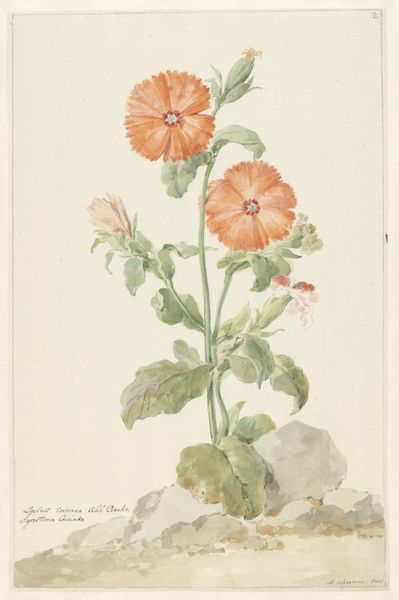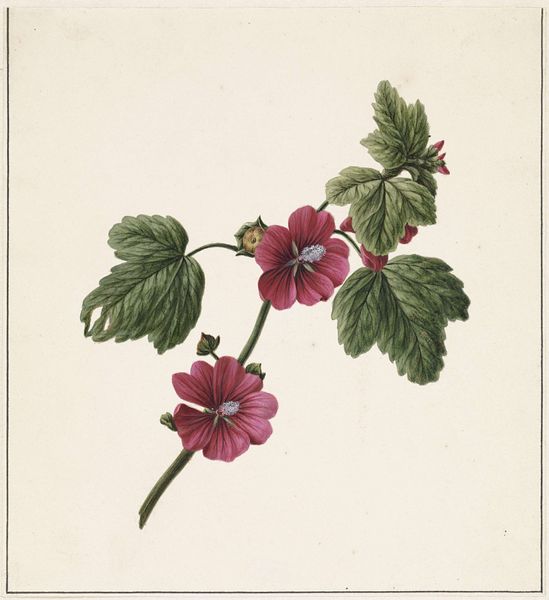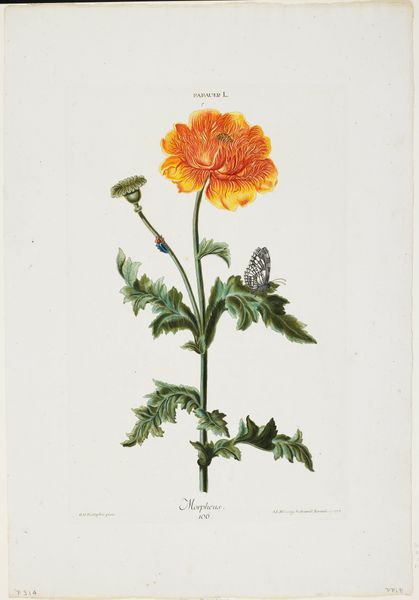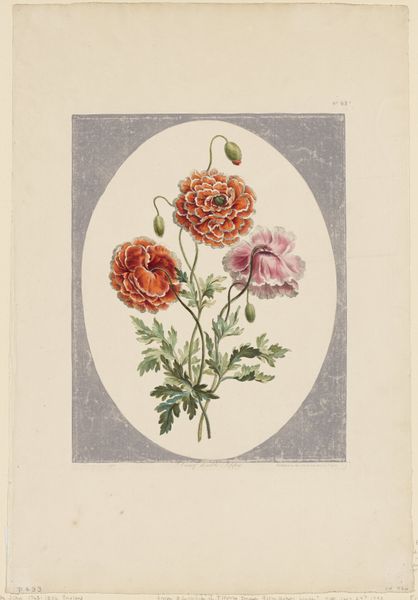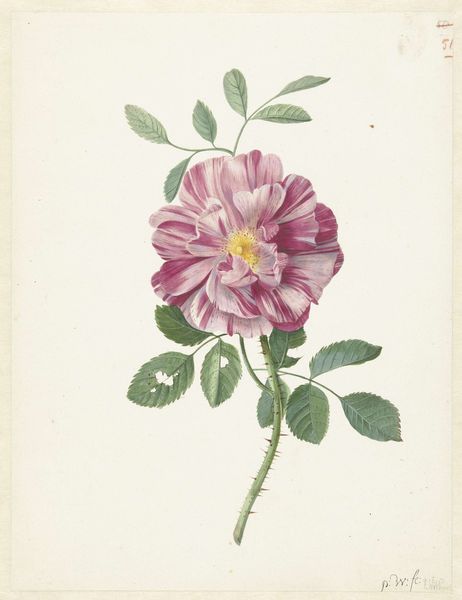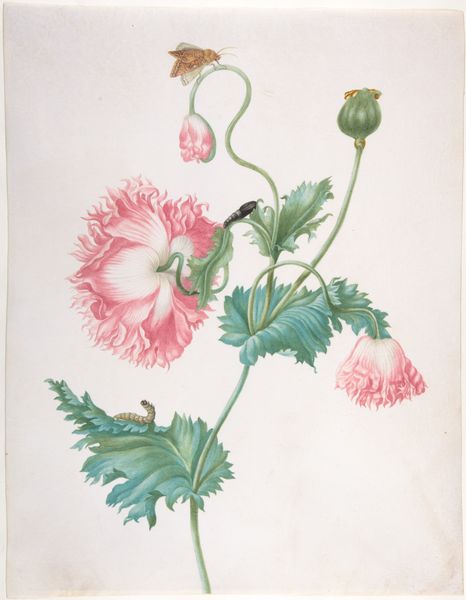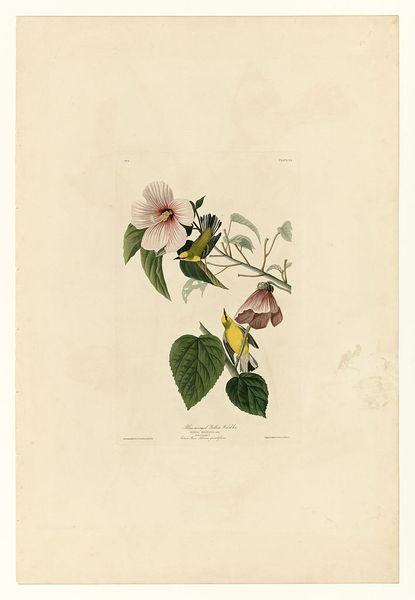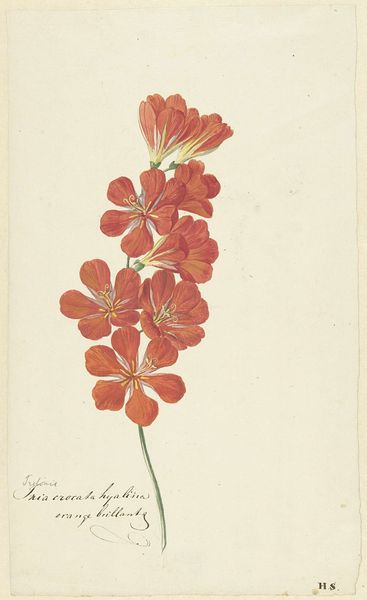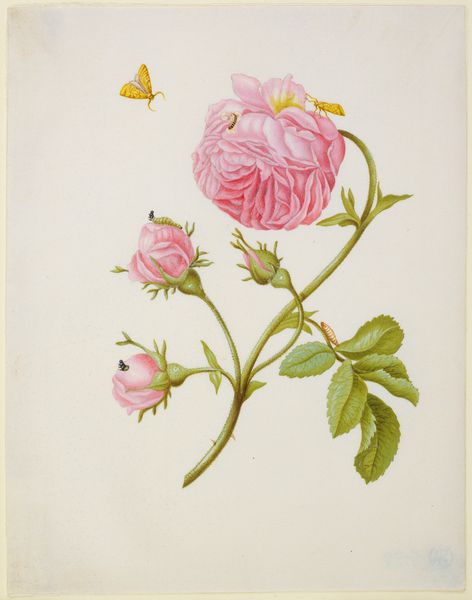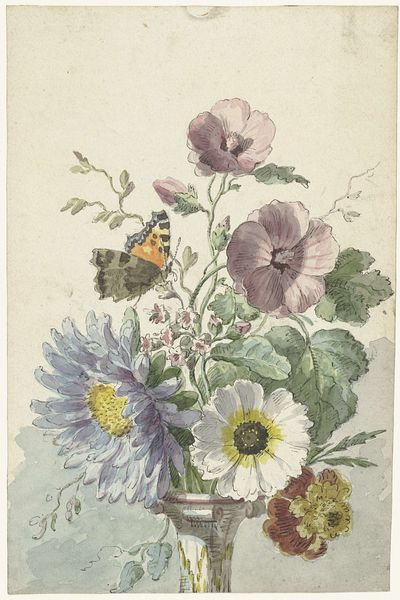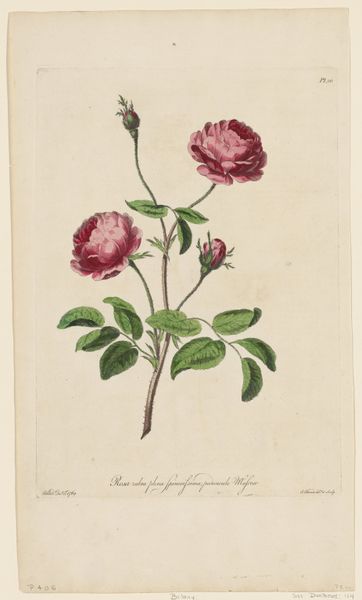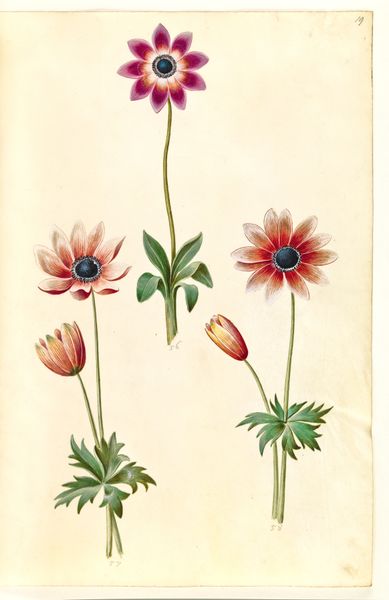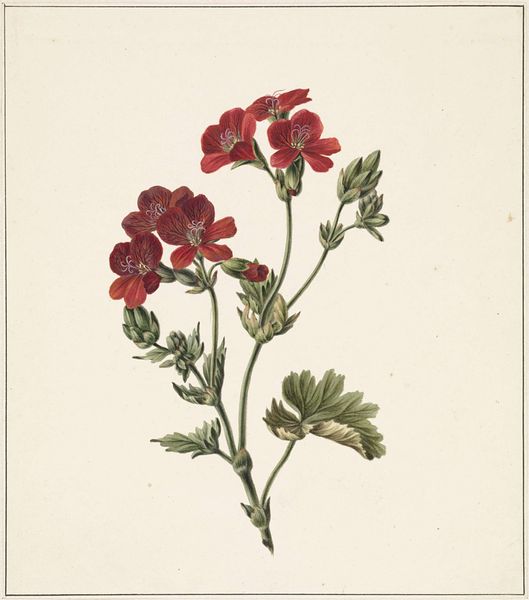
drawing, paper, watercolor
#
drawing
#
flower
#
paper
#
watercolor
#
romanticism
#
line
#
watercolour illustration
#
botanical art
#
realism
Dimensions: height 229 mm, width 204 mm
Copyright: Rijks Museum: Open Domain
Editor: This watercolor drawing from the early 19th century depicts a 'Gele Chinese roos', or yellow Chinese rose, by M. de Gijselaar. It’s so delicately rendered. What social or cultural contexts informed its creation? Curator: Botanical art flourished in the 19th century alongside increased colonial expansion and scientific exploration. These detailed illustrations, seemingly objective, actually participated in the act of collecting, classifying, and often exploiting natural resources. This rose, the *Rosa Chinensis Lutea*, wasn’t just beautiful; it represented a global reach, power, and the beginnings of what some scholars call ‘bioprospecting’ or even ‘biopiracy.’ Consider whose gaze is centered here and for whose consumption was this image created. Editor: That’s a perspective I hadn't considered. It’s unsettling to think that such a beautiful image could be tied to colonial exploitation. Were there gendered aspects to this? Curator: Absolutely. While male scientists led expeditions, women were often involved in the creation of botanical illustrations, but often remained uncredited for their contributions, performing this task inside the private, domestic sphere. Think about the limitations placed upon women scientifically and artistically at the time and the ways their labour reinforced societal power structures. Does that understanding affect your viewing of the work? Editor: It definitely does. Knowing the drawing may have been implicated in colonial activities or was rendered anonymously within a rigid domestic setting changes how I perceive its beauty and innocence. It raises difficult but vital questions about the relationship between art, power, and representation. Curator: Exactly! Engaging with these questions allows us to deconstruct the power dynamics inherent in art history and question the neutrality we often ascribe to older works. We start to see art not as existing in a vacuum but actively participating in historical narratives.
Comments
No comments
Be the first to comment and join the conversation on the ultimate creative platform.
